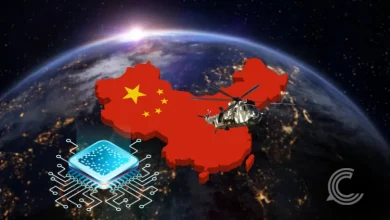China’s K-Visa Program Lures Indian Tech Talent Away from the American Dream

Key Points:
- China’s K-visa program launch coincides with the U.S. H-1B program facing significant new restrictions, including a proposed $100,000 fee for new applicants and heightened scrutiny
- Unlike the U.S. H-1B, China’s K-visa allows STEM graduates to apply for entry, residence, and employment without a prior job offer or employer sponsorship, offering unprecedented flexibility
- The policy is specifically attracting interest from the vast pool of Indian STEM talent, many of whom now face an increasingly uncertain and expensive pathway to working in the United States
Global competition for elite tech talent has entered a new phase, with China launching its K-visa program to attract high-skilled foreign workers, particularly those from India.
The move comes at a strategic time, directly challenging the traditional brain drain path to the West as the U.S. tightens its H-1B visa rules and dramatically increases associated costs. Beijing is actively signaling its intention to become a premier destination for the world’s best scientific and technical minds.
A New Magnet for Global Talent
China’s new K-visa program, which took effect in October 2025, is explicitly designed to streamline the entry of young, high-potential professionals in Science, Technology, Engineering, and Mathematics (STEM). The visa targets recent graduates and early-career researchers who hold a bachelor’s degree or higher from a recognized university, either domestically or abroad, AP news reported.
The most notable feature, and one that directly contrasts with the US system, is its independence. An applicant can secure the K-visa without a sponsoring employer, giving them the freedom to conduct research, engage in academic exchanges, or pursue entrepreneurial activities. This simplified, individual-driven process is meant to make working in China a far more accessible prospect than navigating the complex and employer-dependent US H-1B lottery system.
The US Immigration Uncertainty
The timing of China’s initiative is crucial. The traditional pathway for Indian tech talent, the US H-1B visa, is facing its most significant challenges in years. The Trump administration has implemented new policies, including an aggressive hike in the application fee for new H-1B applicants, which analysts report could be as high as $100,000.
This steep financial barrier, coupled with ongoing federal investigations into potential H-1B misuse, has created significant uncertainty.
According to a report by The Times of India, many job-hunting Indian students in the U.S. now face “automatic rejection” from employers unwilling to shoulder the immense costs and legal risks associated with visa sponsorship. This development has effectively narrowed the traditional career funnel to Silicon Valley for thousands of skilled graduates.
A Geopolitical Talent Grab
Is China leveraging this instability in US immigration policy to strategically buy the world’s best talent? Analysts and US lawmakers believe the answer is yes. Indian-American Congressman Raja Krishnamoorthi warned that the K-visa program is a “direct hit to the US economy” and a deliberate attempt to lure away talent that would have once sustained American innovation. He argues that this will divert the wealth, patents, and job creation that traditionally accompany top-tier talent straight into the PRC’s economy, as reported by The Financial Express.
This effort to short-circuit India’s traditional brain drain to the West represents a major geopolitical shift. While the US still holds advantages in academic research and its use of English, China is positioning itself as a growth engine in strategic industries like AI, advanced manufacturing, and biotechnology.
The Indian Perspective
For Indian professionals, the calculus is changing. The US has long been the gold standard, but the increasing difficulty and cost associated with the H-1B are forcing a “look East.” Vaishnavi Srinivasagopalan, a skilled Indian IT professional, told The Associated Press that the K-visa is “a good option for people like me to work abroad,” viewing it as a clear equivalent to the H-1B.
However, challenges remain. The language barrier is a significant hurdle, as is the difference in political and organizational cultures.
Furthermore, internal backlash from Chinese netizens, who worry the new visa will bring in foreign competition amid high youth unemployment, could complicate the program’s long-term success. For now, however, the K-visa has opened a powerful, new professional pathway, giving Indian tech talent a viable alternative to the West’s increasingly restrictive doors.



